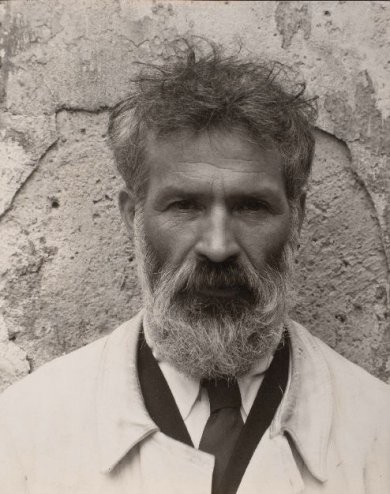Talk of the Town
03 Aug - 08 Dec 2013

Edward Steichen
Constantin Brancusi, Voulangis, France, 1922
gelatin silver print, 9 15/16 × 7 15/16 in, Gift of Richard and Jackie Hollander, M.2008.239.5
© permission of the Estate of Edward Steichen.
Constantin Brancusi, Voulangis, France, 1922
gelatin silver print, 9 15/16 × 7 15/16 in, Gift of Richard and Jackie Hollander, M.2008.239.5
© permission of the Estate of Edward Steichen.
TALK OF THE TOWN
Portraits by Edward Steichen from the Hollander Collection
3 August – 8 December 2013
Edward Steichen, born in Luxembourg in 1879, transformed photography with his brilliantly conceived and executed portraits. This exhibition includes celebrity images, fashion photography, and commercial advertising work, all of which were initially consumed, not in gallery presentations, but in magazines. Reaching a wide popular audience in print, Steichen exerted an unprecedented impact on an evolving modernist sensibility during the 1920s and ’30s.
Soon after moving from Paris to New York in 1923, Steichen read a Vanity Fair article that claimed he was giving up photography for painting, when in fact the opposite was true. Upon correcting the error with the magazine’s editor, Steichen was invited to a lunch with publisher Condé Nast, who promptly offered him the position of chief photographer. Steichen accepted, and his portraits of luminaries of the theater, literature, music, and the visual arts, along with those of scientists, athletes, and fashionable "It Girls" were published in both Vanity Fair and Vogue from 1923 to 1938. His work set a new standard for future portrait photographers, whose work would appear in both magazines and galleries.
Portraits by Edward Steichen from the Hollander Collection
3 August – 8 December 2013
Edward Steichen, born in Luxembourg in 1879, transformed photography with his brilliantly conceived and executed portraits. This exhibition includes celebrity images, fashion photography, and commercial advertising work, all of which were initially consumed, not in gallery presentations, but in magazines. Reaching a wide popular audience in print, Steichen exerted an unprecedented impact on an evolving modernist sensibility during the 1920s and ’30s.
Soon after moving from Paris to New York in 1923, Steichen read a Vanity Fair article that claimed he was giving up photography for painting, when in fact the opposite was true. Upon correcting the error with the magazine’s editor, Steichen was invited to a lunch with publisher Condé Nast, who promptly offered him the position of chief photographer. Steichen accepted, and his portraits of luminaries of the theater, literature, music, and the visual arts, along with those of scientists, athletes, and fashionable "It Girls" were published in both Vanity Fair and Vogue from 1923 to 1938. His work set a new standard for future portrait photographers, whose work would appear in both magazines and galleries.
